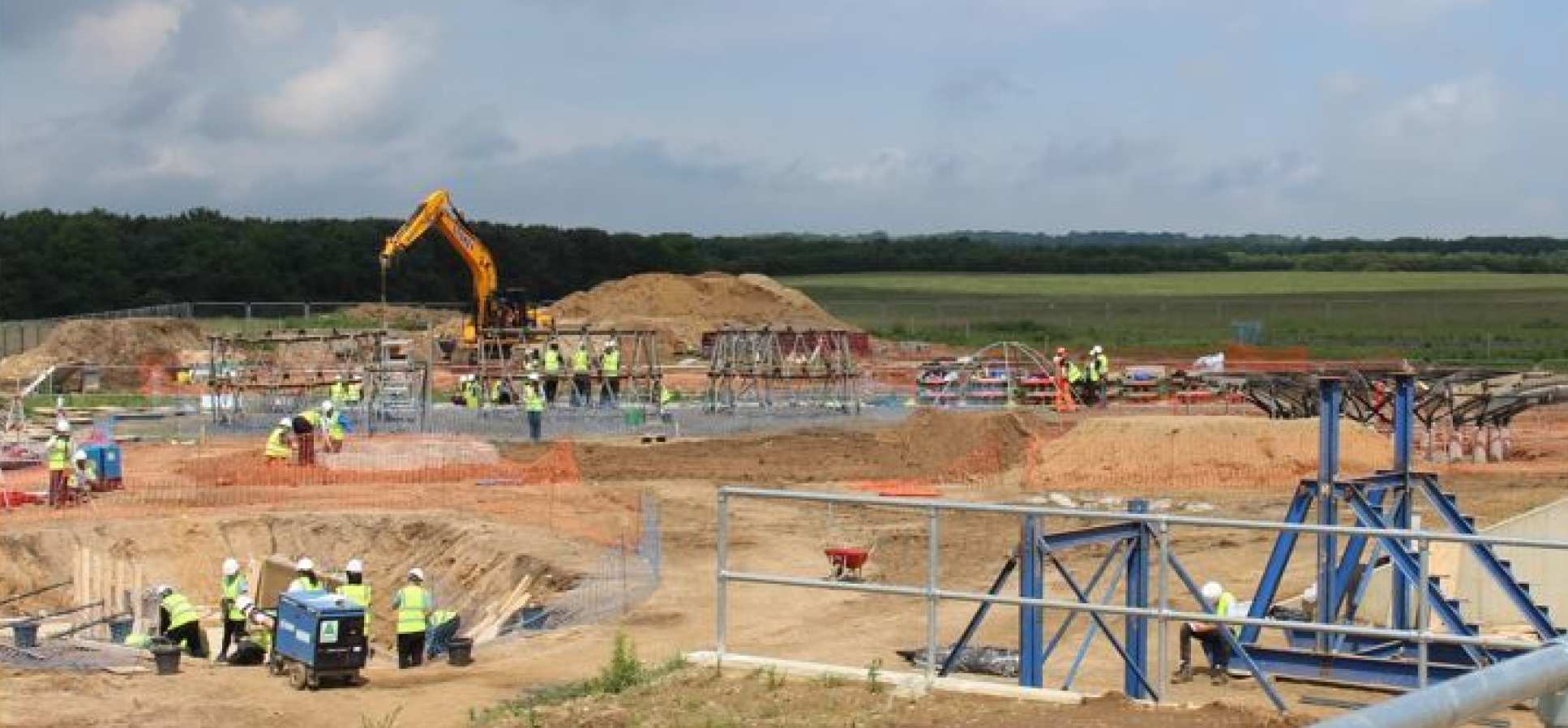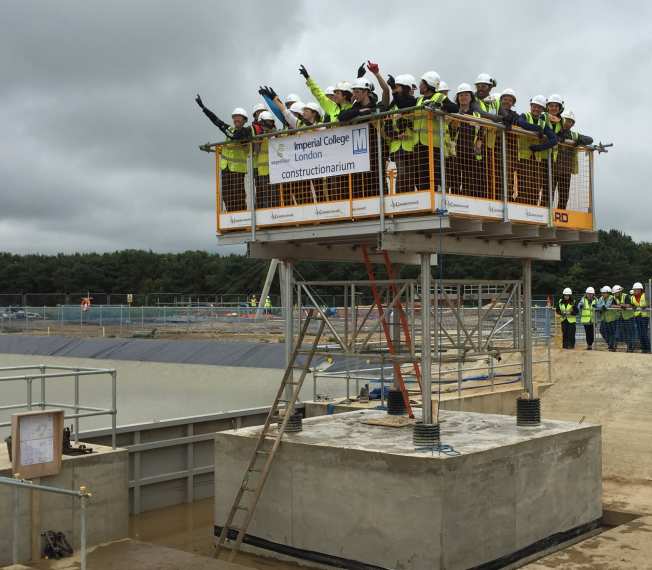Undergraduate Civil Engineers translate their knowledge into concrete and steel during Imperial’s ground-breaking Constructionarium course

This summer, 84 second year undergraduate students made the journey to the National Construction College, in Bircham Newton in Norfolk, to take part in Imperial’s hugely successful Constructionarium module.
Pioneered by industry partners and Civil Engineering staff, Constructionarium is a radical design course, allowing students to manage and build real engineering projects at a bespoke construction site.

Currently in its 14thyear, this project has been adopted by over 20 UK universities, unrivalled due to its unique project-based learning. The Constructionarium module is designed to inform students about constructability, so that their own future designs are more realistic to construct.
Alison Ahearn, one of Constructionarium’s founders at Imperial said: “We have evolved from a classroom module, in which we asked students to make structural members out of rolled-up paper, into a multi-million pound outdoor learning environment with steel and concrete.”
With the support of Imperial staff, technicians and Graduate Teaching Assistants, four teams of 21 students were challenged to form their own construction companies and complete their project within a week, as well as manage their budget and materials. This year’s projects included scaled-down versions of Kingsgate Footbridge, the Gherkin skyscraper, Don Valley Stadium, and Ravenspurn Oil Rig.
Staff and GTAs from Imperial and our industry teaching partners celebrating the end of the week Over the years Constructionarium has strengthened relations between Imperial and industry partners. Students were joined on site by several senior members of staff from contracting and consultancy practices, including Graham Hardwick, Marquita Cox-Gardner and Hak Nazerali from Morrisroe, and James Parker from Expedition Engineering. Also on hand to impart their experience were Ben Godber, from Godber and Co., and volunteers from CH2M.

Whereas many of the students had never set foot on a working site before, they were now receiving health and safety, and power tool training from construction professionals, and coordinating and directing excavators, cranes, and concrete trucks.
Hak Nazerali, a Health and Safety Engineer from Morrisroe, said: “Constructionarium is a great transition from theory to a hands-on, practical-learning experience. It helps the students to really understand time-frames and the process behind all the planning in construction.”
The physical nature of Constructionarium was a new concept for many of the students, who discussed the challenges they had envisaged for the week.
Catherine Ding (Don Valley Team) said: “We have to pay high attention to detail now we are working with real 3D structures, and we find our priorities shifting towards logistics and health and safety. For example how are we going to lift the reinforcement bars to great heights? How are we going to fix the joints?”
“It’s been like nothing we’ve encountered before,” said Jean Marc Feghali (the Gherkin Team). “There are so many more things to think about when it’s real, particularly executing the project and keeping everyone safe on site. For example we will have to create massive weldings, but now we have to seriously consider the safety implications and act accordingly.

Stefan Algar, a technician in the Structures Laboratory at Imperial, said: “The students are in a very challenging situation, but they’ve had a great attitude towards their work throughout the week. As technicians, we’re here to bring a practical element, but the students have done all the thinking, all the learning, and all the doing.”
Hak Nazerali, from Morrisroe, added: “Everyone here deserves to feel a great sense of achievement. They’ve learned so many key skills, and they’ve improved hugely over the week. Their health and safety standards are phenomenal.”
“I never thought that contracting would be something I would be interested in, but this has been a once in a lifetime opportunity,” said Alice Jackson (the Gherkin). “I’ve had such a good time. The fact that you’re starting from scratch and you’re seeing all this being brought together, I can now truly understand why people would want to be a part of construction.”
Imperial’s Dr Sunday Popo-Ola summed up the experience, saying: “Constructionarium allows every student to taste the responsibilities of practical engineering, which converts students of engineering into student engineers. We are very proud of the success of this year’s students and of our teaching team. We could not do it without our industry partners.”





